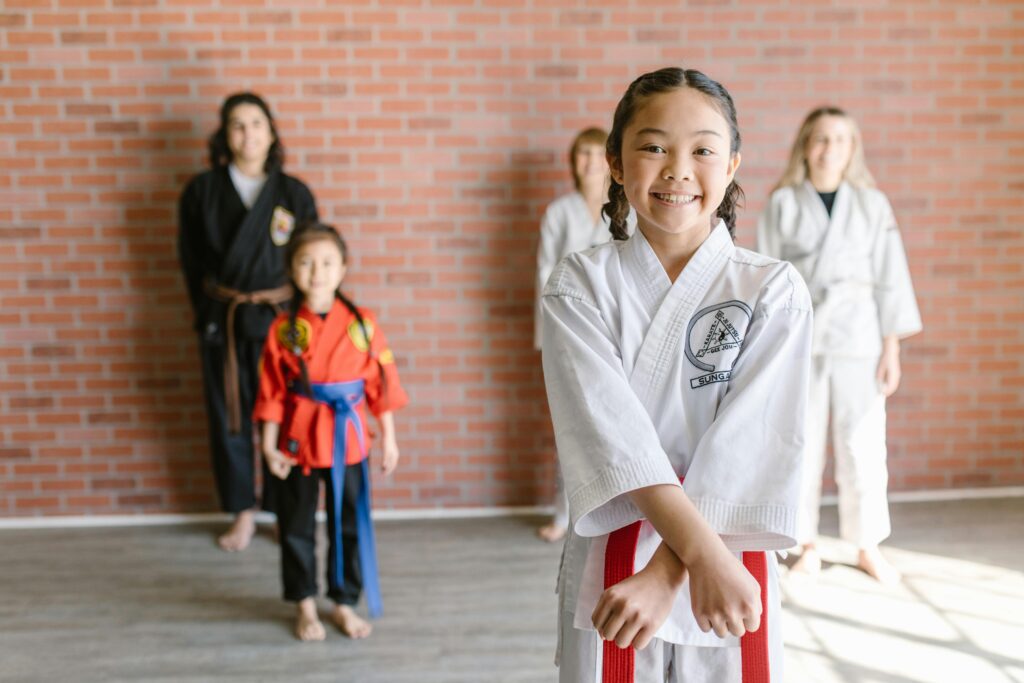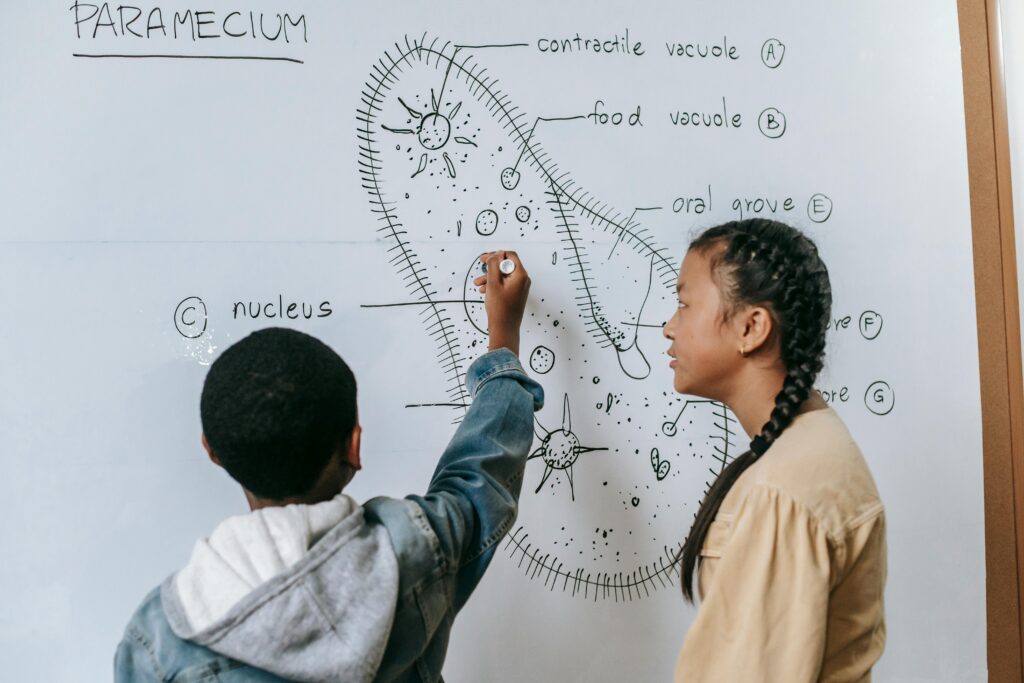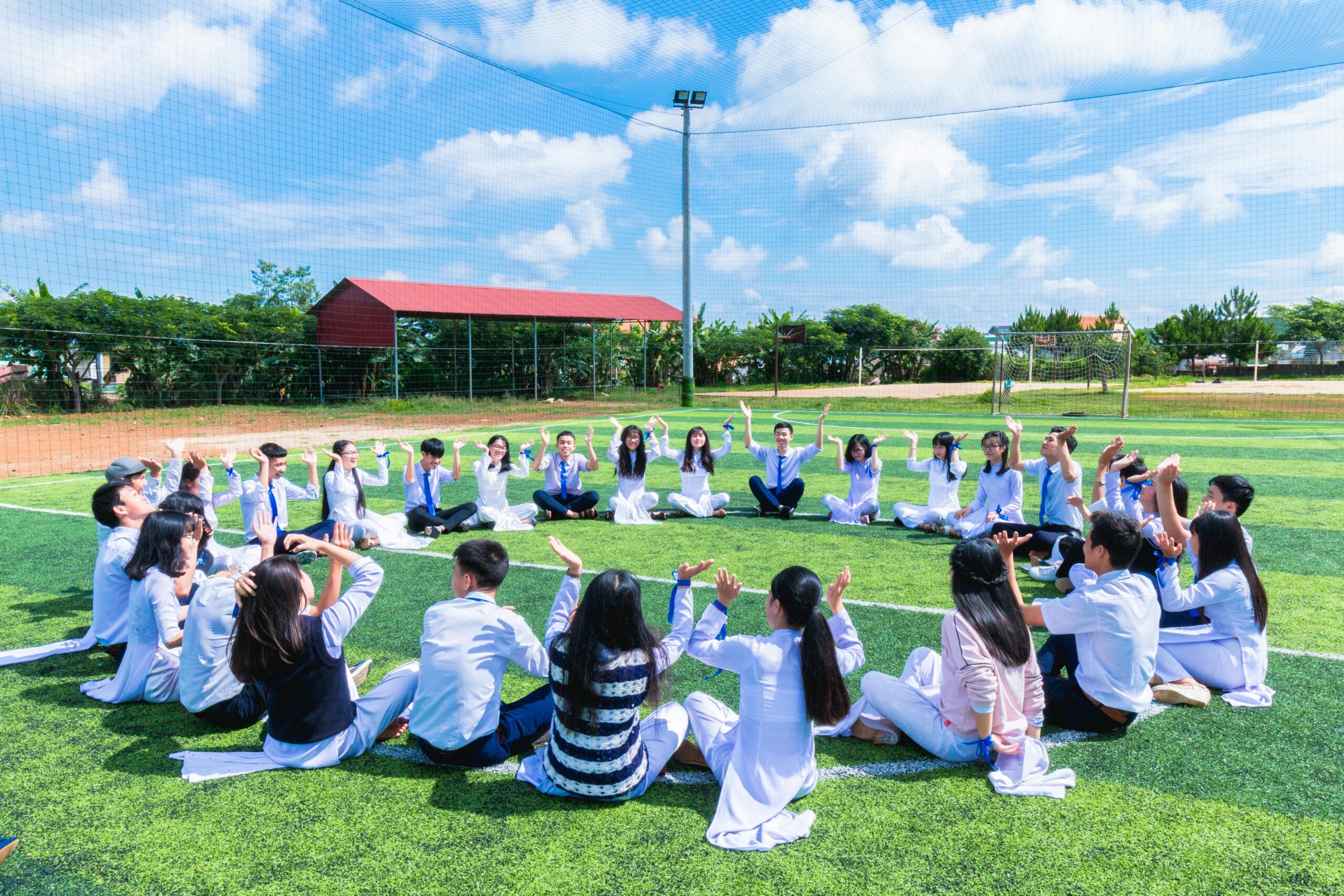Understanding Theory of Knowledge (TOK)
When you hear about the International Baccalaureate (IB) program, you’ll often come across the term Theory of Knowledge (TOK). But what exactly is TOK, and why is it an essential part of the IB curriculum? Let’s dive into what TOK is and how it challenges your child’s thinking, making it a pivotal component of their IB experience.
What is Theory of Knowledge (TOK)?
TOK is a unique course in the IB curriculum that explores the nature of knowledge itself. It encourages students to ask profound questions like, “How do we know what we know?” and “What counts as reliable knowledge?” Through TOK, students examine different ways of knowing—such as perception, emotion, reason, and language—and different areas of knowledge, including natural sciences, human sciences, history, and the arts.
The main goal of TOK is to help students develop a critical awareness of their own perspectives and biases, as well as those of others. This awareness is crucial in our interconnected world, where understanding diverse viewpoints can lead to more informed and empathetic global citizens.
Encouraging Critical Thinking
One of the standout features of TOK is its focus on critical thinking. The course doesn’t just provide information; it challenges students to question and analyze it. For instance, when studying scientific knowledge, students might explore the question, “Can scientific theories be proven true, or are they always subject to revision?”
This critical approach encourages your child to move beyond rote memorization and engage deeply with material, fostering skills that are valuable in both academic and real-world contexts. They learn to construct well-reasoned arguments, identify fallacies, and consider the implications of different knowledge claims.
Connecting Different Areas of Knowledge
TOK is unique in its interdisciplinary nature. It connects various subjects within the IB curriculum, helping students see the links between them. For example, a TOK discussion might explore how historical knowledge can influence scientific research or how ethical considerations impact artistic expression.
By making these connections, TOK helps students appreciate the complexity and interrelatedness of different fields of study. This holistic understanding is particularly beneficial in today’s multifaceted world, where problems and solutions often span multiple disciplines.
The TOK Essay and Presentation
Two major components of the TOK assessment are the TOK essay and the TOK presentation. The essay requires students to write a 1,600-word paper on one of six prescribed titles, which are broad, philosophical questions. This essay allows them to delve deeply into a specific knowledge question, drawing on their studies and personal experiences.
The TOK presentation, on the other hand, is a more practical application. Students must identify a real-life situation and explore it through the lens of TOK. This presentation helps them apply their theoretical knowledge to real-world issues, demonstrating the practical relevance of their studies.
Developing Open-Mindedness
A key aspect of TOK is its emphasis on open-mindedness. Students are encouraged to consider multiple perspectives and recognize that their own viewpoint is just one among many. This is particularly important in a multicultural and diverse province like Ontario.
Through discussions and debates, students learn to respect differing opinions and understand the value of cultural diversity. This not only enriches their educational experience but also prepares them to interact respectfully and effectively with people from various backgrounds in their future careers.
Real-World Relevance
One of the most compelling aspects of TOK is its real-world relevance. The skills and attitudes developed in TOK are not confined to the classroom. They are applicable in everyday life, from making informed decisions to engaging in meaningful conversations about current events.
For example, when faced with a controversial issue, a TOK student is likely to consider multiple viewpoints, evaluate the evidence critically, and articulate their position clearly and thoughtfully. These skills are invaluable in a world where information is abundant, but critical thinking is often lacking.

Understanding the Extended Essay (EE)
The Extended Essay (EE) is a crucial component of the International Baccalaureate (IB) Diploma Programme (DP). It’s a chance for your child to engage in independent research on a topic they’re passionate about. In Ontario, this process can be both challenging and rewarding. Here’s a clear and easy guide to help you understand what your child will be doing and how you can support them.
What is the Extended Essay (EE)?
The Extended Essay is a 4,000-word research paper that allows students to explore a topic of their choice in depth. This essay is designed to promote high-level research and writing skills, intellectual discovery, and creativity. It’s more than just a school assignment; it’s an opportunity for your child to delve into a subject they are truly interested in.
Think of it as a mini-thesis. Your child will develop a research question, conduct thorough research, and present their findings in a structured essay. This process helps them prepare for university-level research and demonstrates their ability to pursue an independent project.
Choosing a Topic
The first step in the EE process is choosing a topic. This might be the most exciting part for your child! Encourage them to pick a subject they are passionate about, whether it’s a scientific investigation, a historical analysis, or a literary critique. The key is to select a topic that is both interesting and manageable.
Once the topic is chosen, your child will need to formulate a clear research question. This question should guide their investigation and be specific enough to allow for in-depth study. For example, instead of a broad question like “What are the effects of climate change?” a more focused question would be “How has climate change affected the migratory patterns of birds in Ontario?”
Conducting Research
With a research question in hand, your child will begin the research phase. This involves gathering information from various sources such as books, academic journals, and reputable websites. They may also conduct experiments, surveys, or interviews if applicable.
Encourage your child to stay organized during this phase. Keeping detailed notes and properly citing sources will save time later and ensure their essay meets academic standards. Many students find it helpful to create an outline or a research plan to keep track of their progress.
Writing the Essay
Writing the EE is a step-by-step process. It starts with creating an outline, which helps organize ideas and ensures that the essay has a logical structure. The introduction should introduce the research question and explain why it’s significant. The body of the essay presents the research findings, analysis, and discussion. Finally, the conclusion summarizes the key points and reflects on the research process.
Your child should aim to write clearly and concisely. Each paragraph should focus on a single idea and support the overall argument. Remind them to stick to the word limit and to edit and proofread their work carefully. Many IB schools provide writing workshops and resources to help students with this process.
The Role of the Supervisor
Each student is assigned a supervisor—a teacher who guides them through the EE process. The supervisor provides feedback on the research question, drafts, and the final essay. Regular meetings with the supervisor help ensure that your child stays on track and receives the support they need.
Encourage your child to make the most of these meetings. They should come prepared with questions and updates on their progress. The supervisor’s insights can be invaluable, especially when it comes to refining the research question and structuring the essay.
The Viva Voce
After submitting the EE, your child will have a viva voce, an oral defense of their essay. This is an opportunity for them to discuss their research and reflect on the process. It’s a chance to demonstrate their understanding and to address any challenges they faced.
The viva voce is typically a relaxed conversation with the supervisor and another teacher. Encourage your child to prepare by reviewing their essay and thinking about what they learned. This final step can be a rewarding way to conclude the EE experience.
Supporting Your Child Through the EE
As a parent, you play a crucial role in supporting your child through the EE process. Here are some tips to help them succeed:
- Encourage Time Management: Help your child set a timeline for completing the different stages of the EE. Breaking the task into smaller, manageable parts can make it less overwhelming.
- Create a Study Space: Provide a quiet, comfortable place for your child to work on their research and writing.
- Be a Sounding Board: Offer to listen to their ideas and provide feedback. Sometimes, talking through a problem can help clarify their thoughts.
- Stay Positive: The EE is a challenging task, but it’s also an incredible learning opportunity. Encourage your child to stay motivated and remind them of the skills they are developing.



Understanding Creativity, Activity, Service (CAS)
The International Baccalaureate (IB) Diploma Programme includes a unique component called Creativity, Activity, Service (CAS). CAS is an essential part of the IB experience, helping students develop personally and socially through a range of activities. Here’s a guide to understanding CAS requirements and the types of activities your child can engage in.
What is CAS?
CAS stands for Creativity, Activity, Service. It’s designed to help students become well-rounded individuals. Unlike traditional classroom learning, CAS focuses on experiential learning and personal growth. It encourages students to step out of their comfort zones and take part in activities that challenge and inspire them.
Creativity involves arts and other experiences that involve creative thinking. Activity focuses on physical exertion and maintaining a healthy lifestyle. Service includes voluntary work that benefits the community. These elements aim to foster a sense of responsibility and develop skills that will be valuable in life.
CAS Requirements
To fulfill CAS requirements, students must engage in activities from all three categories over 18 months. They need to demonstrate that they’ve met seven learning outcomes, which include identifying strengths and areas for growth, undertaking new challenges, planning and initiating activities, working collaboratively, showing perseverance, engaging with global issues, and considering ethical implications.
Students must document their activities and reflect on their experiences. This can include writing journal entries, creating portfolios, or using digital platforms. Regular meetings with a CAS coordinator help ensure students are on track and meeting requirements.
Types of Creativity Activities
Creativity activities are all about exploring and expressing ideas. Your child can participate in a wide range of activities, from painting and music to drama and creative writing. They might join a school band, take part in a theater production, or start a blog about a topic they love.
Encourage your child to think outside the box. For example, they could design a community art project, create a documentary film, or develop a new app. The goal is to engage in activities that require imagination and innovation.
Types of Activity Activities
Activity activities focus on physical exertion and healthy living. This can include traditional sports like soccer, basketball, or swimming, as well as individual pursuits like hiking, yoga, or martial arts. Your child might join a school sports team, participate in a charity run, or take up rock climbing.
Physical activity is crucial for maintaining a healthy body and mind. Encourage your child to try something new and challenging. For instance, they might organize a fitness boot camp for friends or participate in a dance competition.
Types of Service Activities
Service activities involve voluntary work that benefits others. This can range from local community service to international projects. Your child could volunteer at a local food bank, participate in environmental clean-up efforts, or help organize a fundraising event for a charity.
Service activities teach students about empathy, social responsibility, and the importance of giving back. Encourage your child to find causes they are passionate about. They might start a recycling program at school, tutor younger students, or raise awareness about global issues.
Reflecting on CAS Experiences
Reflection is a key part of CAS. It helps students understand their experiences, learn from them, and make connections between different activities. Your child will reflect on their activities regularly, considering what they learned, how they felt, and how they can improve.
Encourage your child to keep a CAS diary or blog. They can document their journey, write about their challenges and successes, and share their insights. Reflection helps students develop self-awareness and critical thinking skills.
Balancing CAS with Academic Work
Balancing CAS activities with academic work can be challenging, but it’s an important skill. Help your child create a schedule that allows time for both. Encourage them to prioritize their tasks, set realistic goals, and manage their time effectively.
Remind your child that CAS is an integral part of the IB experience. It’s not just about meeting requirements but also about personal growth and having fun. Support them in finding a balance that works for them.

Interdisciplinary Learning in IB: A Cohesive Experience for Ontario Students
The International Baccalaureate (IB) program is renowned for its interdisciplinary approach, integrating different subjects to create a cohesive learning experience. This method helps students make connections between subjects, fostering a deeper understanding and appreciation for the material. Here’s how the IB program achieves this and why it’s beneficial for your child.
What is Interdisciplinary Learning?
Interdisciplinary learning involves combining multiple subjects into a single, comprehensive learning experience. Instead of teaching subjects in isolation, the IB program encourages students to draw connections between disciplines. This approach mirrors real-world situations, where problems and solutions are rarely confined to a single field.
For example, a project on climate change might include elements of science, geography, economics, and even literature. Students might study the scientific causes of climate change, analyze its economic impacts, explore geographical data, and read literature that reflects environmental themes. This holistic approach ensures that students understand the broader context of their studies.
Benefits of Interdisciplinary Learning
Interdisciplinary learning offers numerous benefits. It encourages critical thinking, as students learn to approach problems from multiple perspectives. This method also promotes creativity, allowing students to draw on diverse knowledge and skills. By making connections between subjects, students gain a deeper understanding of the material and its real-world applications.
For Ontario students, this approach is particularly valuable. The ability to think critically and creatively is essential in today’s rapidly changing world. Interdisciplinary learning prepares students to tackle complex issues, equipping them with the skills they need to succeed in higher education and beyond.
How IB Integrates Different Subjects
The IB program integrates subjects through various methods, including interdisciplinary units, projects, and assessments. These activities require students to apply knowledge from different disciplines, encouraging them to think holistically. For example, the Middle Years Programme (MYP) includes a personal project that spans multiple subjects, allowing students to explore a topic of their choice in depth.
In the Primary Years Programme (PYP), transdisciplinary themes guide the curriculum. These themes, such as “Who We Are” and “How the World Works,” encourage students to explore connections between subjects. Through inquiry-based learning, students investigate real-world issues, developing a comprehensive understanding of the material.
Interdisciplinary Units and Projects
One of the key features of the IB program is its interdisciplinary units and projects. These activities are designed to integrate knowledge from multiple subjects, helping students see the connections between different areas of study. For example, a unit on renewable energy might include lessons in science, mathematics, and social studies.
In these units, students might conduct experiments to understand the science behind renewable energy, use mathematical models to predict energy output, and study the social and economic impacts of renewable energy adoption. By engaging with the topic from multiple angles, students develop a well-rounded understanding of the subject.
Encouraging Collaboration and Teamwork
Interdisciplinary learning also encourages collaboration and teamwork. Many projects require students to work in groups, combining their knowledge and skills to achieve a common goal. This collaborative approach mirrors real-world situations, where teamwork and communication are essential.
In the Diploma Programme (DP), for example, the Theory of Knowledge (TOK) course requires students to reflect on the nature of knowledge across different disciplines. Through discussions and presentations, students explore how various subjects contribute to our understanding of the world. This collaborative approach helps students develop strong communication and teamwork skills.
Real-World Applications
One of the greatest strengths of interdisciplinary learning is its focus on real-world applications. By integrating subjects, the IB program helps students understand how their knowledge can be applied to solve real-world problems. This approach makes learning more relevant and engaging, motivating students to explore new ideas and concepts.
For instance, a project on urban planning might involve lessons in geography, mathematics, economics, and environmental science. Students might analyze population data, create mathematical models, study economic trends, and assess environmental impacts. This interdisciplinary approach helps students see the practical applications of their studies, preparing them for future challenges.
Preparing for the Future
Interdisciplinary learning prepares students for the future by equipping them with essential skills. Critical thinking, creativity, collaboration, and problem-solving are all crucial in today’s world. The IB program’s interdisciplinary approach ensures that students develop these skills, making them well-rounded and adaptable learners.
In Ontario, where education standards are high, the IB program’s focus on interdisciplinary learning sets students apart. It prepares them for success in higher education and their future careers, ensuring they have the knowledge and skills they need to thrive.



